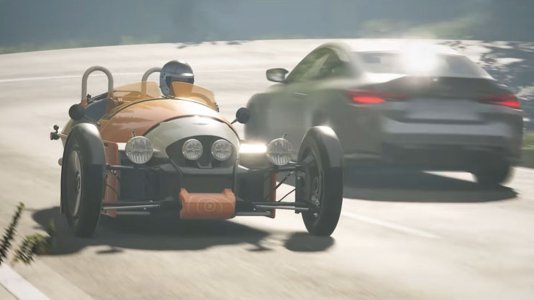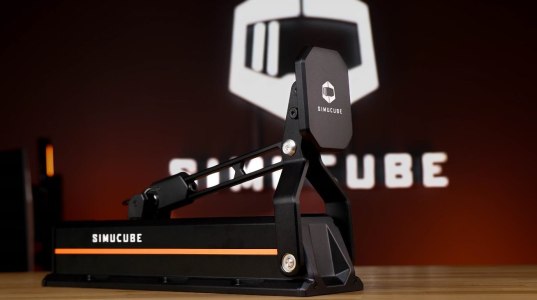I have been following this thread along with the tactile thread from
@Mr Latte. What benefit does the t.racks dsp provide for the exciters?
I have finally received my seat and going to order the exciters soon(hopefully in stock soon as well). They are going to be my first step into my tactile setup and wanted to know the benefits of the dsp for them. I understand it for the sub 20hz for the buttkickers as I have learned the same
Shall We Dig Deeper?
To clear up some confusion on this as I have seen in some threads people say you don't need DSP on the exciters. Or that its only benefical to large BK to boost low bass. Well, this can be true in that we don't necessarily "need it", but not correct when it comes to them not benefiting the user from having it even with exciters. Remember that things I recommend are based always on giving improved performance but also more user self-adjustability for the installation.
Crossover?
So firstly if using exciters and without DSP as they are like speakers and will be audible. We want to restrict their output to operate like transducers in reproducing only the bass frequencies. In our application used here, we do not want the sound but only the vibrational sensations to be generated.
Secondary Soundcard
I recommend with installations, to set aside a secondary soundcard to handle ALL the exciters. Keep them separated from other BK/TST units and place them on the primary Simhub card.
So when it comes to Simhub and mapping effects, it makes it easier if you want to adjust or apply an effect to the exciters. You then highlight that secondary soundcard and the routing screen for it will not now have to contain the layers being output for the BK/TST units, hopefully making it all less confusing. Likewise, if you are mapping effects for a BK/TST then they can be placed on the primary card and without the layers for the exciters.
Soundcard Output Tuning
Now then, additionally, Simhub has a basic "Crossover" feature within "Output Tuning"
So without DSP for the exciters, we can restrict the output here for each card, and it does not affect the BK/TST units on the primary card. Each card can have its own "Output Tuning" crossover or use none. You wouldn't want to restrict the BK unit with the crossover used on the exciters. This is also why it is best to place the exciters on their own soundcard, even if you are not using all the channels of the first/primary card.
Individual Unit Tuning
To protect the exciters we can have them operate from @30-200Hz which will help their lifespan in bypassing the lowest bass signals we may send to the larger BK and as mentioned at the start using them only within the typical bass frequency range of @ 200Hz-250Hz which is the limit of bass.
Exciters With DSP
Okay lets cover some aspects of why this is beneficial and recommended...
Firstly we can apply a crossover in the same way but have more control over the filtering of the crossover than Simhub offers. Additionally, we can use PEQ (Parametric EQ) and this lets us decrease/increase the dB energy (amplitude) of individual frequencies or a set group of frequencies. Please note, that benefits in tuning are not always about increasing bass output as certain units generate peaks with specific frequencies and often we may actually want to reduce this peak to then better tune other frequencies to be in alignment more to the output we prefer the unit to generate. I refer to this as altering the "Output Character", changing how the unit operates with various frequencies with no DSP to operating more to the users desired preferences with DSP.
Key Factors / Benefits?
While I try to recommend people stick to the same tried/tested hardware...
People will of course buy different soundcards, they will buy/use different amps to power the exciters. We all may have different seats and even varying seat material/compositions and these all factor in how the output of the exciter will be represented.
I also believe some people have variations in the felt conduction of tactile than others regards sensitivity and tolerances of what is an ideal output for all the frequencies. This is also noted based on the materials used with the cockpit/seat being vibrated. Speed or spread of the traveling vibrations and reverberations of different materials may also vary with different frequencies and based on how well the isolation (if any) for the seat/pedals may operate.
Additional Tolerances?
Another factor some have had is that a person with the same amp settings/volumes with identical units may feel more energy from one unit on one side than another. This may be down to slight operational differences in the soundcards output over its channels, it may be variances in the amplifier output or the individual exciter/transducer but I have helped plenty of people in that past that have experienced this to some degree and may I add not just limited to exciters.
Volume Balancing
We can tweak volume layers to individual units in Simhub but the user cannot gain any form of individual frequency control. Adjusting volumes will also increase the harmonics that your effects also(naturally) generate.
Inaccurate / Poor Advice Is Shared
Let's clarify something here, if you read on Simhub Discord or somewhere else that a user can EQ their tactile based on the Hz they apply for the effects (center value) and adjusting volumes, then this person does not know what they are talking about or has any idea of what the true output for tone generation regarding their effects is.
I would also highlight that the same unit but installed in a different placement or method to the seat/pedals can alter again how it is felt within the seat/pedals. The seat has much more body contact regions so likely more variations are possible here.
Installation Zones
So often with the exciters and multiple units being installed, units in the sides may come across of having varied sensations to units in the lower or upper back based on the body region they are being most applied to and that person's own conduction of the tactile generated.
With the DSP the user could actually apply different settings in the control of frequencies generated. To boost/cut the character output for units on the side differently to the to units on shoulders or lower back.
Not just limited to them having more or less volume being applied, or indeed the same DSP sent to all units/channels. So, it really depends how deep the user wants to experiment in obtaining more user preference in the operation of the tactile they feel. At least having the tools available makes it possible for the user to fine-tune the performance of the units, their output character and to reduce or indeed remove any unwanted reverberations.
Control & Personalisation
This is what the DSP enables and hope it helps clarify better how/why it is recommended. All my selected "beta testers" are advised to have the DSP functionality and I look forward to working with them to discover what settings and feedback come about with some experimentation with this. It will be good to determine if we discover preferences that vary even with the same hardware, I actually expect such as being able to personalise how your tactile feels, from research already done, is an important aspect to enjoying it more.
So based on my own experimentation and seeking to improve what we can achieve with tactile. This is why I recommend DSP to be considered and implemented.











